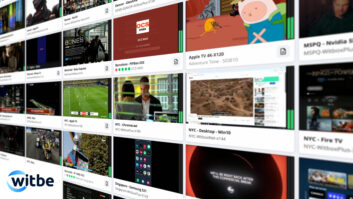In our digitally enabled world, the way we source and watch video content is evolving. The data backs up this shift — subscription OTT services such as Netflix and Amazon Prime overtook paid TV in the UK for the first time in 2018 (according to Ofcom) and 42 per cent of households now have a connected TV, up from 5 per cent in 2012. UK adults are expected to spend 35 minutes per day watching video on mobile devices by 2020, according to eMarketer.
So, what is driving this change? Are people simply responding to advances in technology, or is consumer demand paving the way for a technological shift?
“If you build it they will come” — Technology provides the opportunity
One theory is that technology gives people the tools to access and view video more readily, and behaviour adapts accordingly. The birth of television marks the beginning of video consumption and almost a century later there are around 1.7 billion TV households worldwide. The development of video cassette recorders (VCRs) led consumers to record and playback TV content, while digital video recorders (DVRs) such as TiVo further encouraged this practice, making it simpler and more streamlined.
It wasn’t until 2005 that YouTube’s launch made online video streaming commonplace, as low bandwidth and latency issues were resolved. This technology opened the door for subscription services like Netflix, which now enjoy incredible popularity. Simultaneously, tablet and smartphone evolution and advances in wireless connectivity gave consumers access to video content on the go. With video content available at their fingertips 24/7, consumers can watch more mobile video, whether that is on streaming platforms or social media sites.
Consumer behaviour drives technology development
However, without consumers, this technology wouldn’t have a purpose, and wouldn’t be successful unless people actually embrace and use it.
For example, Apple recognised how individuals enjoyed listening to music on-the-go using portable players such as the Sony Walkman, and so created the iPod to meet consumer demand. The overwhelmingly positive response to these technologies started a ripple effect that resulted in today’s music streaming services. Equally, early social networks revealed consumers like to create their own photo and video content to share with others, which, supported by developments in smartphone cameras, inspired the emergence of platforms such as Instagram.
It could be argued that many of the technology developments in video are driven by the trend for personalisation – the need for a viewing experience that is tailored to specific desires. Consumers demand video content on their own terms, accessible whenever they want it via their device or platform of choice.
This trend is particularly marked in young people, aged 16 to 34, who watch around 40 per cent less TV than they did seven years ago, but consume around an hour a day of material on YouTube via phones, tablets or computers. The global streaming market is set to increase to $82 billion by 2023 according to Interxion, and 61 per cent of young adults in the US are already primarily using streaming services, which encourages media companies to shift their offerings – for example, Instagram and Snapchat now offer streaming video options within their platforms.
The verdict?
In truth, consumer behaviour and technology are interdependent. Technology is developed in response to consumer needs, but needs to be effective for it to be widely used, with adoption subsequently inspiring new iterations and creating a cyclical effect.
Netflix, which was originally founded in 1997 as an online DVD rental company, is a case in point. It wasn’t until YouTube arrived in 2005 and Netflix noticed how consumers reacted well to video streaming that it adopted the technology too. In hindsight, Netflix is a highly effective video platform, but its success is due to its timely response to consumer behaviour. Across digital platforms, users are able to like, comment, share and view what they enjoy, and this helps providers understand what works and what doesn’t. Without consumer engagement, Netflix original Birdbox may not have achieved immediate success — in the first week, Netflix reported 45 million accounts watched the film after it began trending on Twitter.
On the other hand, virtual reality (VR) was predicted to see a wave of adoption that never appeared. While there was interest, price and design issues mean VR headsets haven’t taken off – only five per cent of UK adults use one. This isn’t to say VR as a technology won’t be successful in the future, it just needs to be delivered in a format that will drive adoption.
Shifts in the video landscape are being driven by a combination of consumer demand and technological innovation that together foster change. This should serve as a reminder to tech providers to place the consumer at the heart of everything they do. While new technology can be ingenious and ground-breaking, it must respond to consumer needs to encourage adoption and enjoy continued success.






